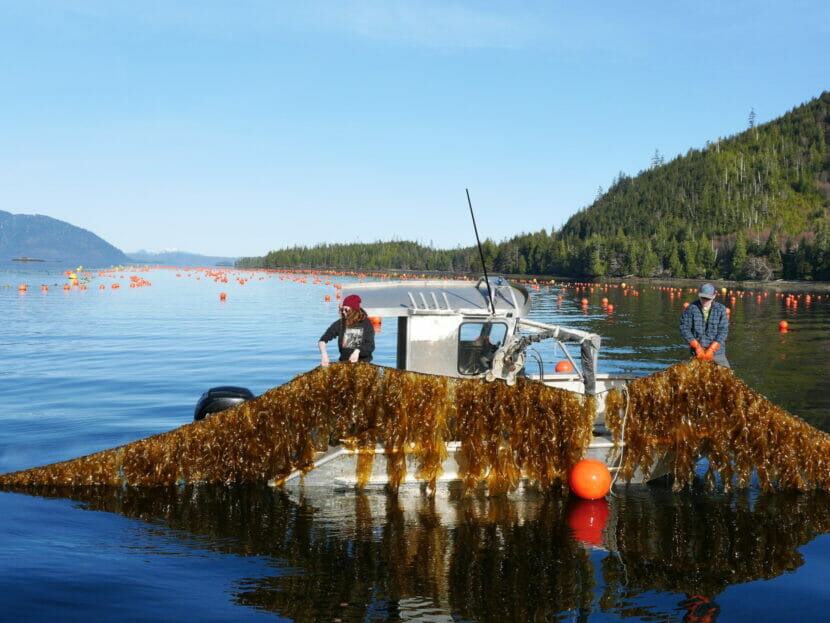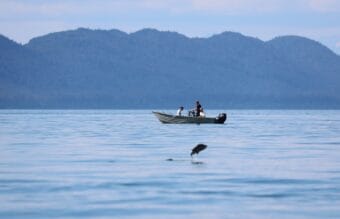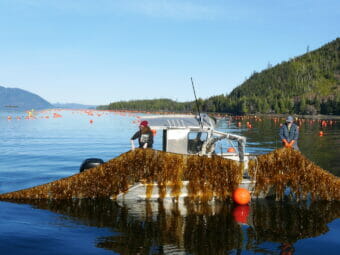
Alaska’s mariculture industry was awarded $49 million in federal funding last year to develop the state’s burgeoning kelp market. Now, industry leaders are looking across the Pacific Ocean for inspiration on how to keep the state’s kelp scene growing.
Nick Mangini is a kelp farmer and mariculture director for the Southwest Alaska Municipal Conference, one of the organizations in charge of distributing the funds. He was in South Korea earlier this month touring kelp farms and processing facilities. Asian countries – including South Korea – make up the bulk of the world’s kelp market.
“Every time I go to a conference or something where it’s all mariculture-related business people, whether that be farmers or industry, you kind of get this buzz and everybody gets excited,” said Mangini. “And it’s what keeps us going right now.”
Mangini and his colleagues are looking to countries like South Korea for inspiration as Alaska overcomes well-documented hurdles in its own budding industry. For one, the state has a processing gap when it comes to kelp – that’s where Mangini says the South Korean farmers have a big advantage.
“They bring in the kelp and hand lay it out in a field and let it air dry, where we don’t have that climate that would allow that, number one,” he said. “And rules through the FDA [Food and Drug Administration] are just going to be way too stringent to make something like that happen.”
Mangini said many kelp farms in South Korea also use seaweed and shellfish cultivation in tandem to maximize their crop.
“So, 70% of the species of kelp that’s most similar to what I grow comes straight off a farm and goes straight into an abalone culture to feed the abalone year round,” he said.
The South Korea visit was sponsored by the World Wildlife Fund and included other kelp farmers and processors from North America and Europe. Mangini said connecting with them was just as informative as meeting with the trip’s South Korean hosts.
“Possibilities for future collaborations with people from the East Coast and the West Coast, people from Canada and Alaska, even into Europe. Just seeing the different products and species and processes that everyone uses was a big part of this for us all too.”
Mangini was one of Alaska’s first kelp farmers. He put in his application for a plot by Near Island – right near the City of Kodiak – in 2016 and harvested his first crop the year after that. Two other people started out the same year as him.
It’s taken off since then; there’s currently 82 mariculture operations in the state, according to the National Oceanic and Atmospheric Administration, and just last year, Alaska kelp farmers harvested 650,000 pounds of seaweed.
That’s a tiny fraction compared to South Korea’s production. But Mangini says Alaska’s mariculture industry has the potential to be a leader by volume — just like its finfish fisheries. He said another big step is getting commercial fishermen to see the industry’s value as a source of income in between fishing seasons.
“I would just hope that we could work together and they could see this as an opportunity for them to use their boats or even, you know, have their own farms in the future,” he said.
Mangini said with federal funds on the way there’s real momentum for the industry in the state. He’s hopeful lessons from the trip will help ease some of the growing pains.



